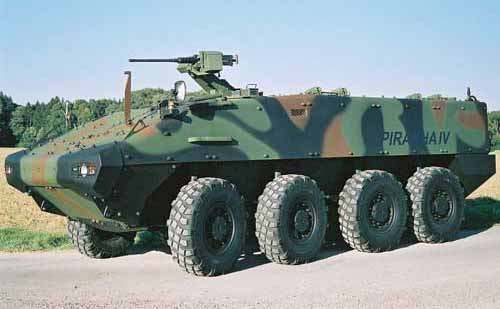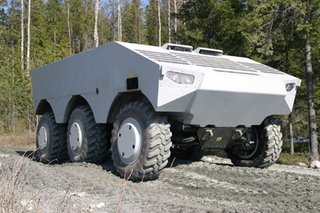
Last Sunday I read with mild interest a couple of defence stories in the mainstream newspapers, one on a new type of parachute and the other on the activities of the SAS in Afghanistan, both written in the breathless "Boy’s Own" style that we have come to expect from the dumbed-down approach to defence that we get from the MSM these days.
Not yet - and one wonders if ever - is any MSM journalist going to write intelligently – or at all – about the biggest single defence procurement project for the Army since the war, none other than the Future Rapid Effects System (FRES), estimated to cost taxpayers a cool £14 billion.
 You would have thought that just the vast cost of this project – much less the revolutionary thinking it brings to armed warfare – might excite some media interest in the project but no – as we have remarked earlier, regimental cap badges have had more coverage.
You would have thought that just the vast cost of this project – much less the revolutionary thinking it brings to armed warfare – might excite some media interest in the project but no – as we have remarked earlier, regimental cap badges have had more coverage.Apart from the occasional reference in The Business, therefore, we are left to plod our solitary path, trying to track the fate of this project, which we last visited in April, with the news of a possible stitch-up in the making between French and German armoured vehicle manufacturers, each with an eye on the British contract.
As always, some of our highly informed readers pitched into the forum with their own comments, demonstrating that, when it comes to military matters, much of the expertise lies outside ambit of the conventional media.
Since then, however, there has been another development – once again courtesy of DefenseNews – which suggests that the MoD is in some trouble over the project and is undergoing a major re-think.
 Thus does DN tell us that the Mod is "set to jettison a plan to create a high-tech armored utility vehicle" for FRES and instead is seek an upgraded version of an existing armored personnel carrier. This, we are told is because of the slippage in the programme, and the need to bring the effort back from 2016 to the 2012 delivery schedule.
Thus does DN tell us that the Mod is "set to jettison a plan to create a high-tech armored utility vehicle" for FRES and instead is seek an upgraded version of an existing armored personnel carrier. This, we are told is because of the slippage in the programme, and the need to bring the effort back from 2016 to the 2012 delivery schedule. What is particularly interesting is that this news was conveyed by a Defence Procurement Agency team to vehicle makers BAE Systems, General Dynamics, GIAT and Patria at a May 4 industry day meeting. Industry sources subsequently have told DefenseNews that the MoD is interested in several candidate vehicles, including a new version of General Dynamics Piranha IV, GIAT Industries' Véhicule Blindé de Combat d'Infanterie (VBCI) and Patria's AMV.
BAE is still in the picture though, and may offer a diesel version of the BAE Hagglunds-developed Splitterskyddad Enhetsplatform (SEP) electric hybrid vehicle, or a version of the Piranha, for which it holds a longstanding licence to market in the United Kingdom.
 Thus, it seems, the MoD is looking seriously at a Swiss-designed (and built?) vehicle, the Piranha IV, a French vehicle, the VBCI, or a Finnish design, the Patria AMV. The only British contender, BAE systems, is offering a Swedish vehicle (SEP) or an older version of the Swiss design.
Thus, it seems, the MoD is looking seriously at a Swiss-designed (and built?) vehicle, the Piranha IV, a French vehicle, the VBCI, or a Finnish design, the Patria AMV. The only British contender, BAE systems, is offering a Swedish vehicle (SEP) or an older version of the Swiss design.Interestingly, the US is currently fielding an enhanced version of the Piranha, re-named the Stryker, and regards this as an interim solution for its own advanced Future Combat System (FCS). The MoD, on the other hand, is at pains to insist that any platform chosen will be "the real thing". This suggests that Britain is opting out of the race to develop "next-generation" armoured vehicles and systems in parallel with the US, and is falling in alongside the Europeans and their own less ambitious plans.
This tends to confirm the contining trend towards the Europeanisation of British armed forces, with the bulk of their equipment supplied by European manufacturers. All we need now are the automatic white-flag dispensers and the take-over will be virtually complete.
COMMENT THREAD
No comments:
Post a Comment
Note: only a member of this blog may post a comment.